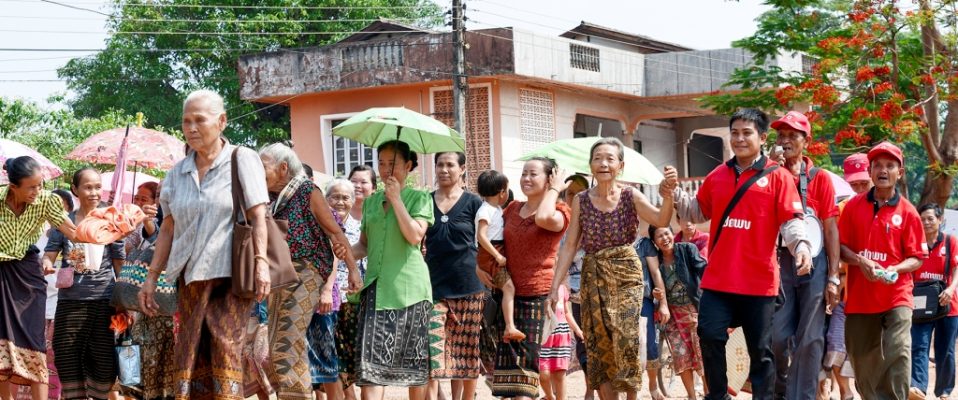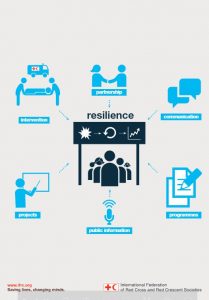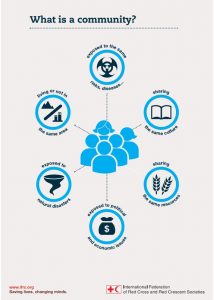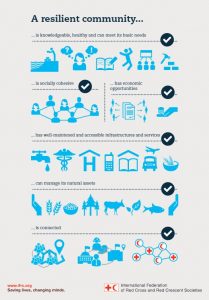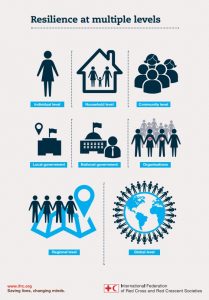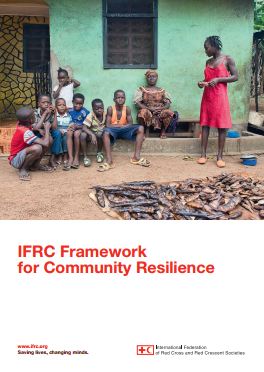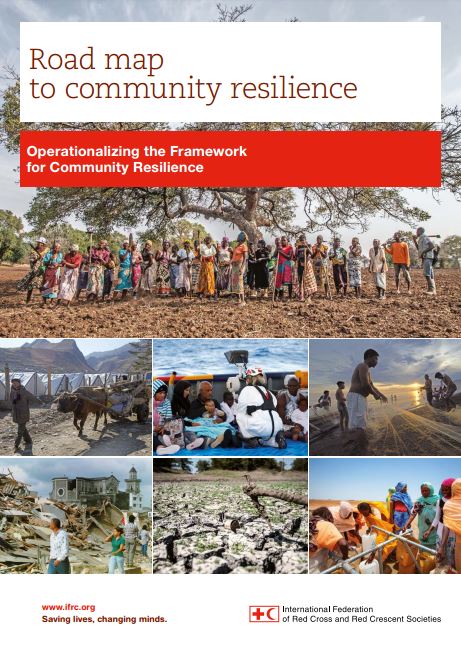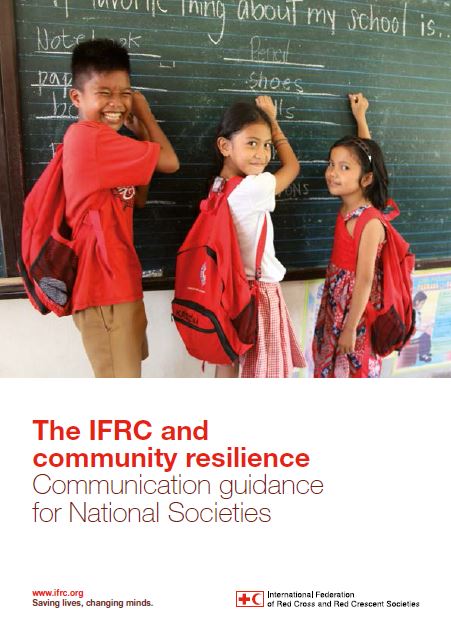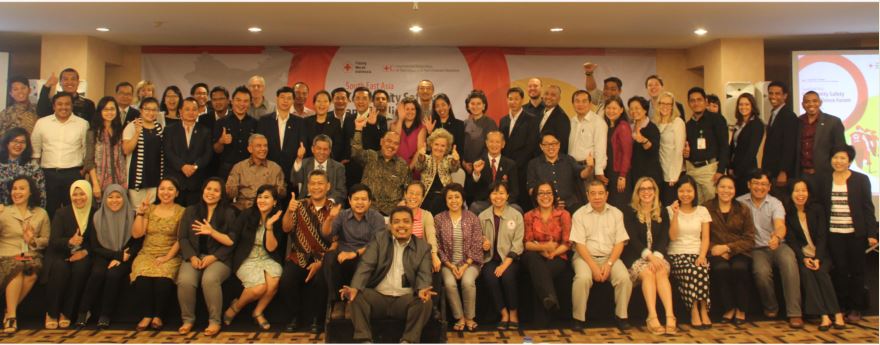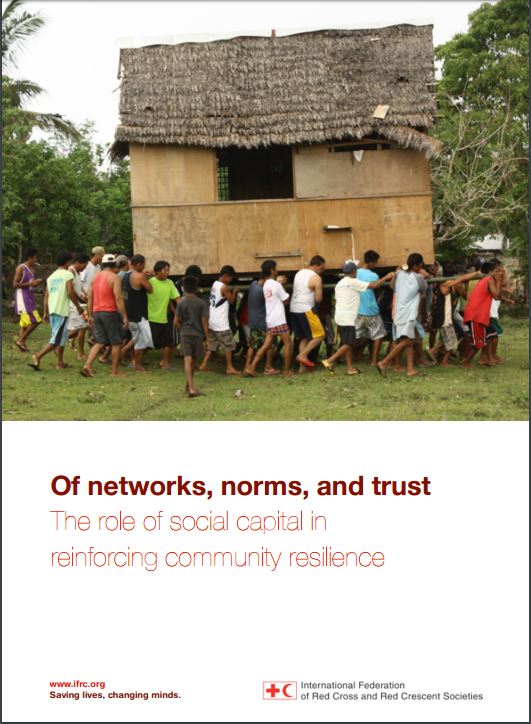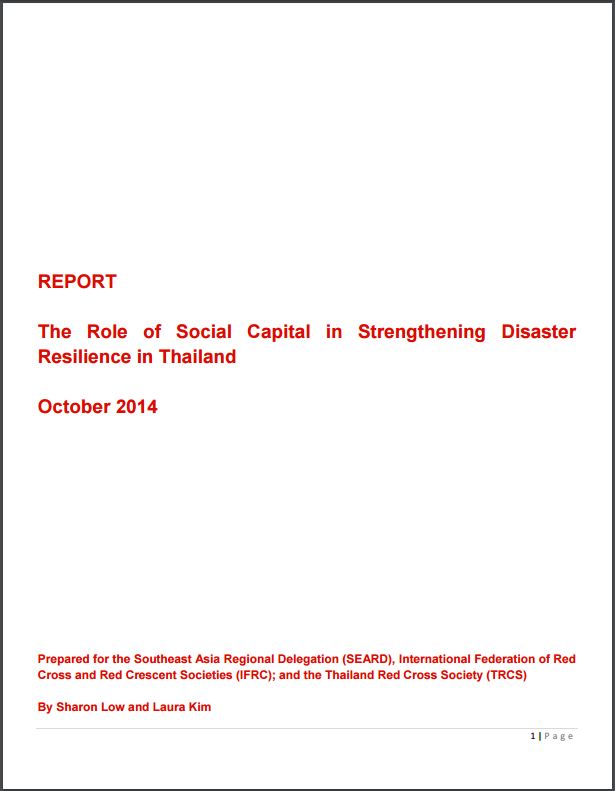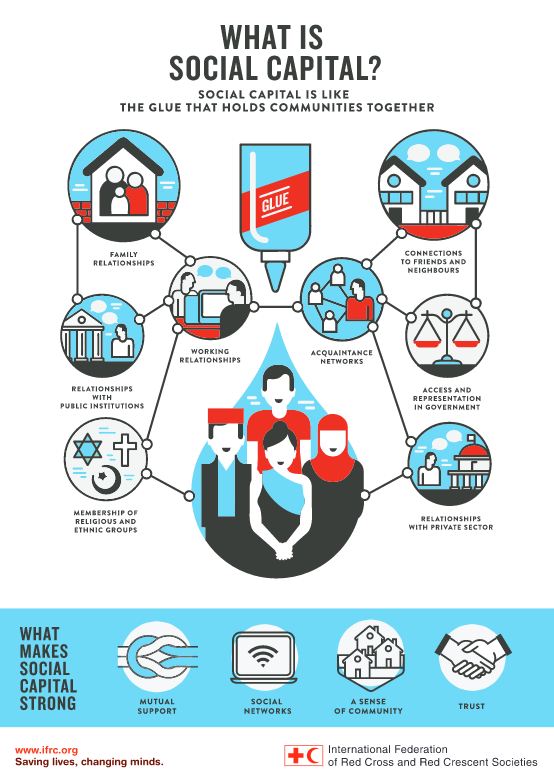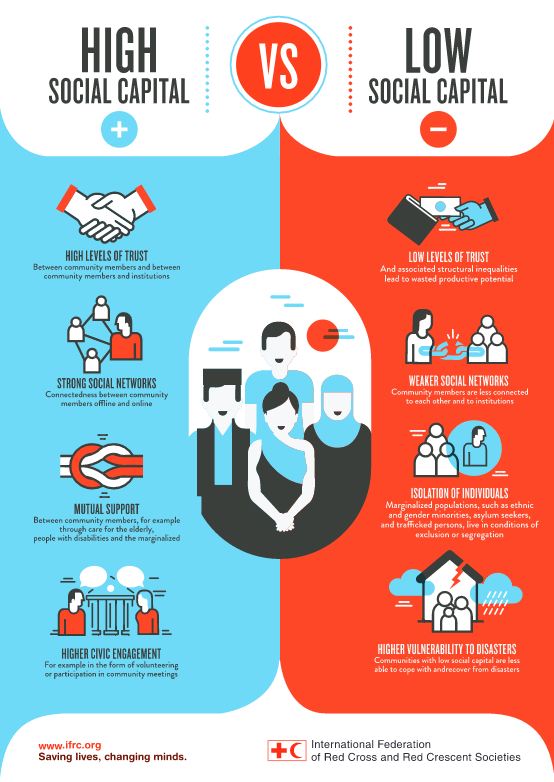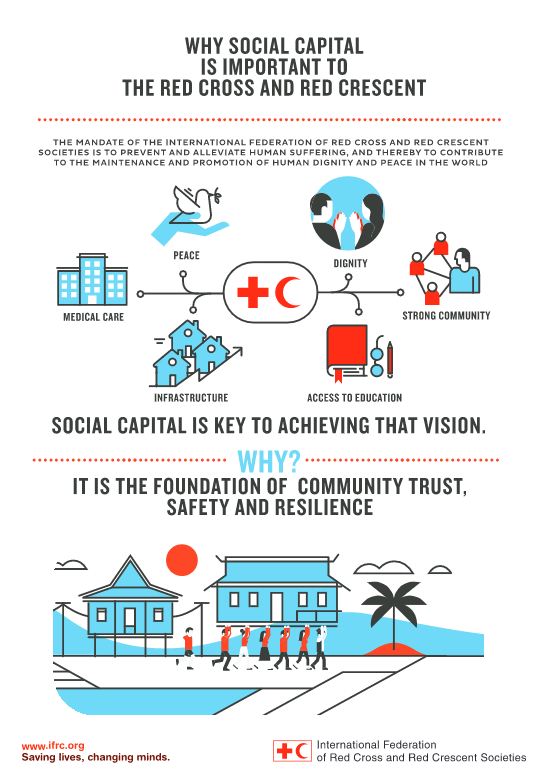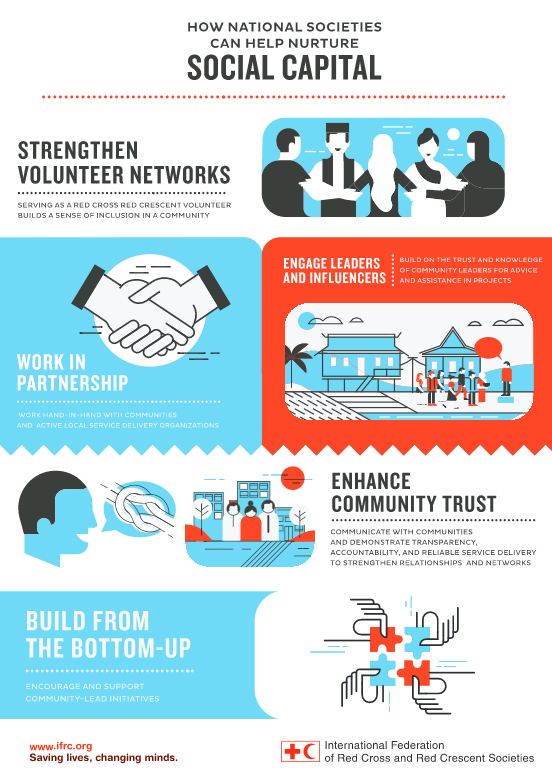The regional perspective
In Southeast Asia, the term ‘community safety and resilience‘ refers to the integrated approach of the three main activities of National Societies: disaster management, health and organizational development/youth.
The Resilience House describes how all sectors and cross-cutting components in our work fit together to support safer and resilient community in Southeast Asia. The Resilience House model was proposed by the Southeast Asia Regional Community Safety and Resilience Forum in 2014 with the support of IFRC. The model is flexible and evolves following the growing experiences of the National Societies of this region in line with IFRC Framework for Community Resilience.
The IFRC defines resilience as:
“The ability of individuals, communities, organizations or countries exposed to disasters, crises and underlying vulnerabilities to anticipate, prepare for, reduce the impact of, cope with and recover from the effects of shocks and stresses without compromising their long-term prospects.”
Definition:
“A community is a group of people who may or may not live within the same area, village or neighbourhood, share a similar culture, habits and resources. Communities are groups of people also exposed to the same threats and risks such as disease, political and economic issues and natural disasters.”
Guiding Documents

e-mail Mr. Hung Ha Nguyen at hungha.nguyen@ifrc.org
Resilience House
The resilience house below shows how each of the sectors and cross-cutting elements interact to support community safety and resilience.

More Resources
- One Billion Coalition for Resilience Brochure
- One Billion Coalition for Resilience – Briefing note to all National Societies
- IFRC Framework for Community Resilience
- The road to resilience – Bridging relief and development for a more sustainable future, IFRC discussion paper on resilience – June 2012
- Characteristics of a Safe and Resilient Community – CBDRR Study, ARUP International Development, Sep 2011
- Key determinants of a successful CBDRR programme – CBDRR Study, Arup International Development, Sep 2011
- Understanding community resilience and program factors that strengthen them – A comprehensive study of Red Cross Red Crescent Societies tsunami operation – June 2012
- Reducing the risks: A Framework for Disaster Risk Reduction in South-East Asia (2008)
- Disaster Risk Reduction – A Global Advocacy Guide (2012)
- A Framework for Community Safety and Resilience in the face of disaster risk (2008)
Community Resilience and Social Capital
The goal of community-based approach is community resilience. In the practical work of the Red Cross/Red Crescent, a community is spatially defined – it concerns a village or a ward. This definition is handy and sensible, as natural hazards are similarly bound by geography. Yet, a community is so much more than just individuals residing beneath each other. It includes intangibles such as a sense of belonging, relations between these individuals, organisation, support and trust. This report is about the “so much more”: social capital – the ‘glue that holds people together’.
- The Role of Social Capital in Reinforcing Community Resilience: Of networks, norms and trust, 2012
- Report on the role of social capital in strengthening disaster resilience in Thailand, Oct 2014
- Infographics of Social Capital and Community Resilience:
Series 1 – What is social capital?
Series 2 – High and low social capital
Series 3 – Why social capital is important to Red Cross and Red Crescent
Series 4 – How National Societies can help nurture social capital
Document library - Community Safety and Resilience
[wpv-view name=”gender-document-view”]
![]()


